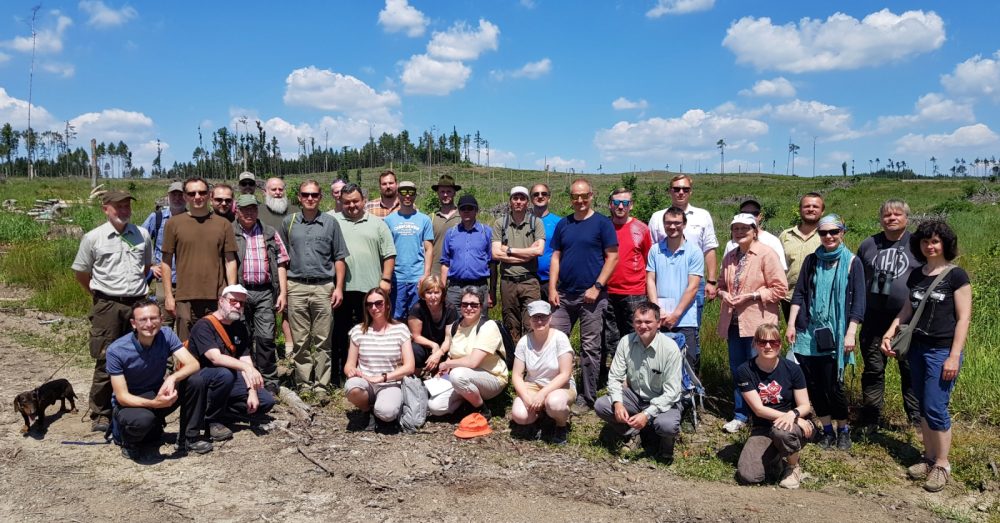Scientists agree: European forests will survive as mixtured stands, only.
From 21 to 23 June 2022, scientists and forestry experts from eight European countries met at the international conference “FORESTS´ FUTURE 2022 – Consequences of Bark Beetle Calamity in Central Europe” in Jihlava, to discuss the course of the bark beetle calamity, forest regeneration in Central Europe, large-scale clearings and the future of European forests. The guarantor of the meeting was the Forestry and Game Management Research Institute (FGMRI). The conference was auspicated by the Minister of Agriculture Ing. Zdeněk Nekula.
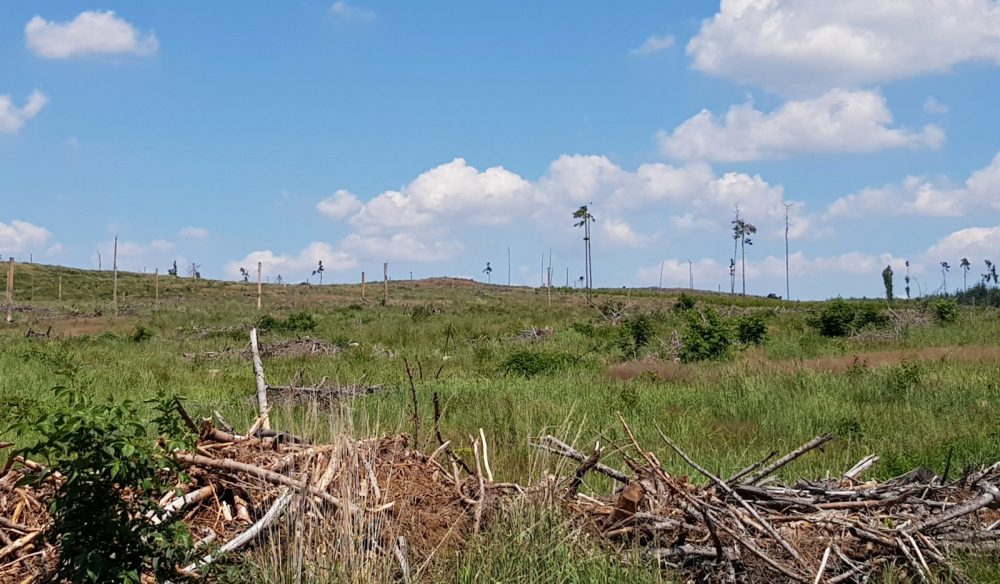 The bark beetle calamity represents a huge burden and destabilization of the entire forest sector, but on the other hand it can be understood also as a certain opportunity to accelerate the changes that are necessary in the forestry to be realized. This was stressed as one of the reasons for organizing this meeting by the Director of FGMRI, Associated Professor Vít Šrámek, Ph.D., in his introductory speech.
The bark beetle calamity represents a huge burden and destabilization of the entire forest sector, but on the other hand it can be understood also as a certain opportunity to accelerate the changes that are necessary in the forestry to be realized. This was stressed as one of the reasons for organizing this meeting by the Director of FGMRI, Associated Professor Vít Šrámek, Ph.D., in his introductory speech.
The regional city of Jihlava was not chosen at random. The Vysočina Region was and still is the epicentre of the bark beetle calamity in the Czech Republic, and Jihlava was a suitable place not only to could be possible talk about the calamity there, but also to experience this on the first-hand during the excursion.
While until recently underbark insect calamities occurred in response to insufficiently fast processing of wood from wind calamities, in many countries, there this the current wave associated more with climatic events, especially with drought in 2015 and 2018. This is more than obviously connected with increasing average temperatures and periods of lack of precipitation.
In terms of the harvested volume of infested wood, the calamity has peaked in Central European countries in the years 2018-2019. In 2021, wood harvesting already declined in all countries, including the Czech Republic. However, the conference participants have agreed that this is not necessarily the end of the bark beetle calamity.
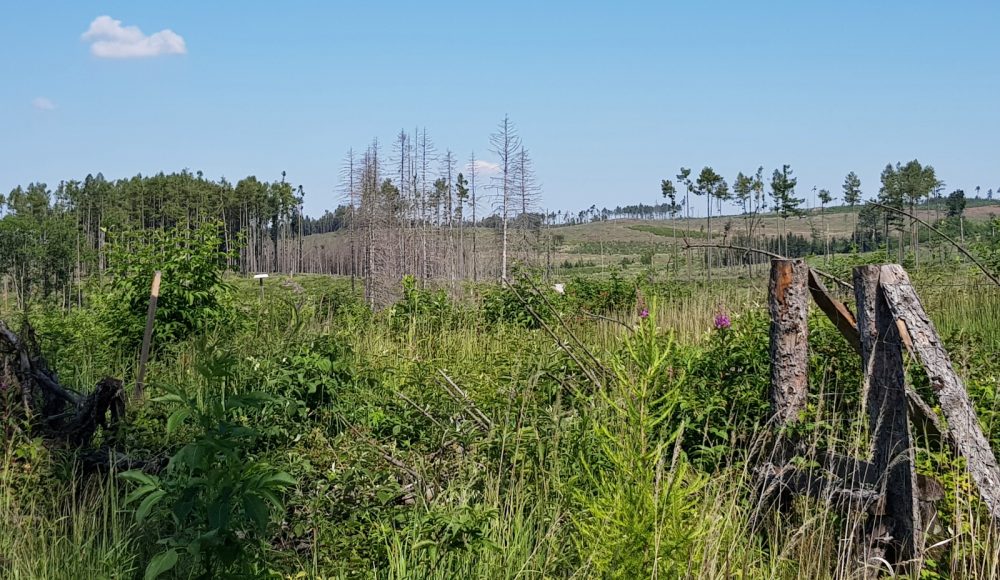 The bark beetle base is still many times high (in thousands of percents), compared to the standard situation. Especially, if hot and dry vegetation periods, as in 2015 or 2018, were repeated, another forest damages can occur quickly. The geographical shift of the calamity is visible clearly – often also because there are only remnants of adult spruce stands in sensitive habitats, in the Czech Republic most affected areas. Thus, the calamity is subdued in northern Moravia and Silesia, in the Bohemian-Moravian Highlands it is moving from the southeast to the northwest, and the area of northern, south-eastern and central Bohemia is highly endangered.
The bark beetle base is still many times high (in thousands of percents), compared to the standard situation. Especially, if hot and dry vegetation periods, as in 2015 or 2018, were repeated, another forest damages can occur quickly. The geographical shift of the calamity is visible clearly – often also because there are only remnants of adult spruce stands in sensitive habitats, in the Czech Republic most affected areas. Thus, the calamity is subdued in northern Moravia and Silesia, in the Bohemian-Moravian Highlands it is moving from the southeast to the northwest, and the area of northern, south-eastern and central Bohemia is highly endangered.
In the second part of the conference, the scientists evaluated the impacts of large-scale bark beetle clearings on environmental parameters. The development of bark beetle clearings completely changes the character of the landscape, thus influencing biodiversity and the occurrence of animal and plant species, while it suits some and others do not. The final total effect depends on both the size of the clearings and the amount and form of dead wood left.
Large areas of clearings with completely removed harvested wood have a negative effect on biodiversity. Soil moisture increases in clearings. In many cases, this leads to significant waterlogging, which complicates forest regeneration. This waterlogging increase the risk of faster water runoff during torrential rains and spring snowmelt, including reduced water quality flowing into sources (higher contents of nitrates and organic matter). In sensitive areas, there is also increased the risk of landslides.
Changes in the chemistry of water in catchments arise in connection with the accelerated decomposition of the humus layer and they are significantly affected by growing vegetation and dead wood left in the river basins. Both the humus layer and the harvesting residues contain significant amounts of nutrients. Therefore, scientists recommend leaving them on harvested cleared areas as much and long, as possible.
 As the separate question is necessary to mention, which kind of forests should be restored after bark beetles damages. Such forests should be able to adapt to ongoing climate change, to ensure high biodiversity and, last but not least, to be a source of quality wood.
As the separate question is necessary to mention, which kind of forests should be restored after bark beetles damages. Such forests should be able to adapt to ongoing climate change, to ensure high biodiversity and, last but not least, to be a source of quality wood.
Forest management in Central Europe is based on 4 – 5 main forest tree species, which completely dominate in commercial forests, and for which of them there is usually an adequate supply of reproductive material. This spectrum needs to be substantially expanded.
For example, in Germany, experts have developed recommendations for strengthening the share of already positively verified tree species, such as cherry, red oak, acacia, grand fir, Douglas fir, larch, aspen, alder, but also for provenance testing of so far little researched tree species such as hornbeam, maple, wild service tree, pubescent oak, Caucasian fir, oriental beech, Turkish hazel or cedar.
In addition to provenance research, another task is to catalogue these tree species for suitable site conditions and to ensure sufficient reproductive material of appropriate provenances. Czech scientists presented new provenance trials, which they established in northern Moravia in the Vítkov area for testing introduced tree species being potentially resistant to drought. A total of 28 introduced tree species were planted on the provenance trials of total area of 6.6 ha.
However, in the context of the ongoing bark beetle calamity, it is also important to pay attention to preservation, propagation and practical use of valuable Norway spruce ecotypes. In this context, the successful rescue of valuable populations of this tree species from the Ore Mountains during the air pollution calamity in the second half of the 20th century and their current repatriation back to original area of their occurrence was recalled.
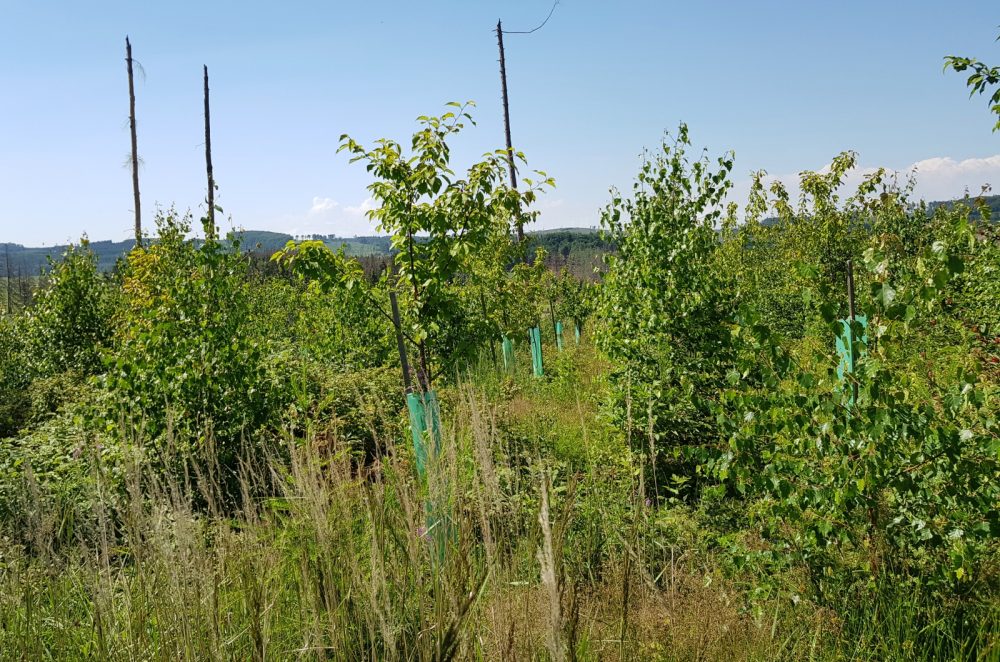 The use of pioneer tree species, it can significantly simplify to the restoration of forest stands on large clear-cutting areas. There are already good experiences disposable with the successful use of birch as a preparatory tree on clearings after Hurricane Kyril, together with recommendations for silviculture measures in birch stands. Birch can be used also as a tree species with significant wood production at a relatively young age.
The use of pioneer tree species, it can significantly simplify to the restoration of forest stands on large clear-cutting areas. There are already good experiences disposable with the successful use of birch as a preparatory tree on clearings after Hurricane Kyril, together with recommendations for silviculture measures in birch stands. Birch can be used also as a tree species with significant wood production at a relatively young age.
Experts agree, that disproportionately high levels of game are significantly limiting the restoration of forests with a diverse species composition. The number of individual species of ungulates in the last 30 years has been counted in the hundreds of percent, including non-native game species such as sika deer, fallow deer and mouflon. With the increase in bare cleared harvested areas, a further significant increase in the number of game can be expected (improvement of soil cover, increase in soil usability) as well as an extreme effect on the composition and growth of regenerated stands.
As part of the conference program, an excursion was prepared, organized in cooperation with the Telč Forest Administration and the Regional Directorate of the Czech Republic Forests (LČR) in Jihlava. The participants of the conference have visited plantings having been established on large-area clearings in the Forest District Zlatomlýn.
In cooperation with FGMRI, a wide range of preparatory and target tree species is used on the planted trials with the use of artificial and natural regeneration. As the subject of testing, there are various planting densities, including protection with fencing and plastic protectors, in these trials. For example, the planting of bird cherry half-plants in combination with birch, with the aim to ensure vegetation after only two years, is promising. This mixture should also have significant production characteristics in a relatively short time horizon at lower renewal costs.
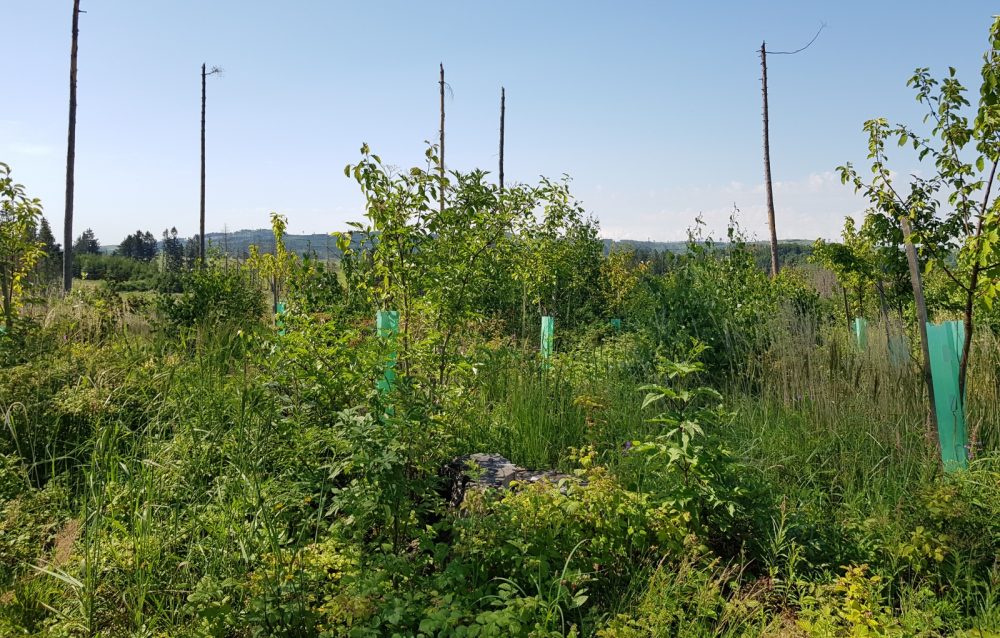 As the last excursion stop, it was the Heraltic water treatment plant, which takes groundwater from the surrounding forest springs and which is an important source of water for Třebíč and some surrounding villages. The drought in 2018 reduced its capacity to 60%. As a result of the bark beetle calamity and deforestation, there has been registered a significant deterioration in the quality of water, which has significantly higher turbidity and high nitrate contents. In addition, the quality and quantity of water abstracted show more significant fluctuations than before the bark beetle infestation and deforestation of the surrounding forest stands.
As the last excursion stop, it was the Heraltic water treatment plant, which takes groundwater from the surrounding forest springs and which is an important source of water for Třebíč and some surrounding villages. The drought in 2018 reduced its capacity to 60%. As a result of the bark beetle calamity and deforestation, there has been registered a significant deterioration in the quality of water, which has significantly higher turbidity and high nitrate contents. In addition, the quality and quantity of water abstracted show more significant fluctuations than before the bark beetle infestation and deforestation of the surrounding forest stands.
At the end of the conference, the director of FGMRI, Associated Professor Vít Šrámek, Ph.D., has stated: “The conference brought an interesting opportunity to exchange information on the bark beetle calamity and the possibilities of appropriate forest regeneration in European countries. Strengthening mutual information and coordination of procedures can lead to greater efficiency in managing the current unfavourable situation. It is likely that a similar meeting will be repeated after two or three years, either in our country or in one of the neighbouring countries. For such next event, we would like to achieve a higher participation of foresters from practice, owners and managers of forest property”.
Illustration photos: Examples of a huge range of calamitous clearings afforested by a diverse mixture of tree species, including birch and bird cherry, Telč Forest Administration, Forest District Zlatomlýn, author Monika Vejpustková
Photo of the participants of the excursion, author Monika Vejpustková
